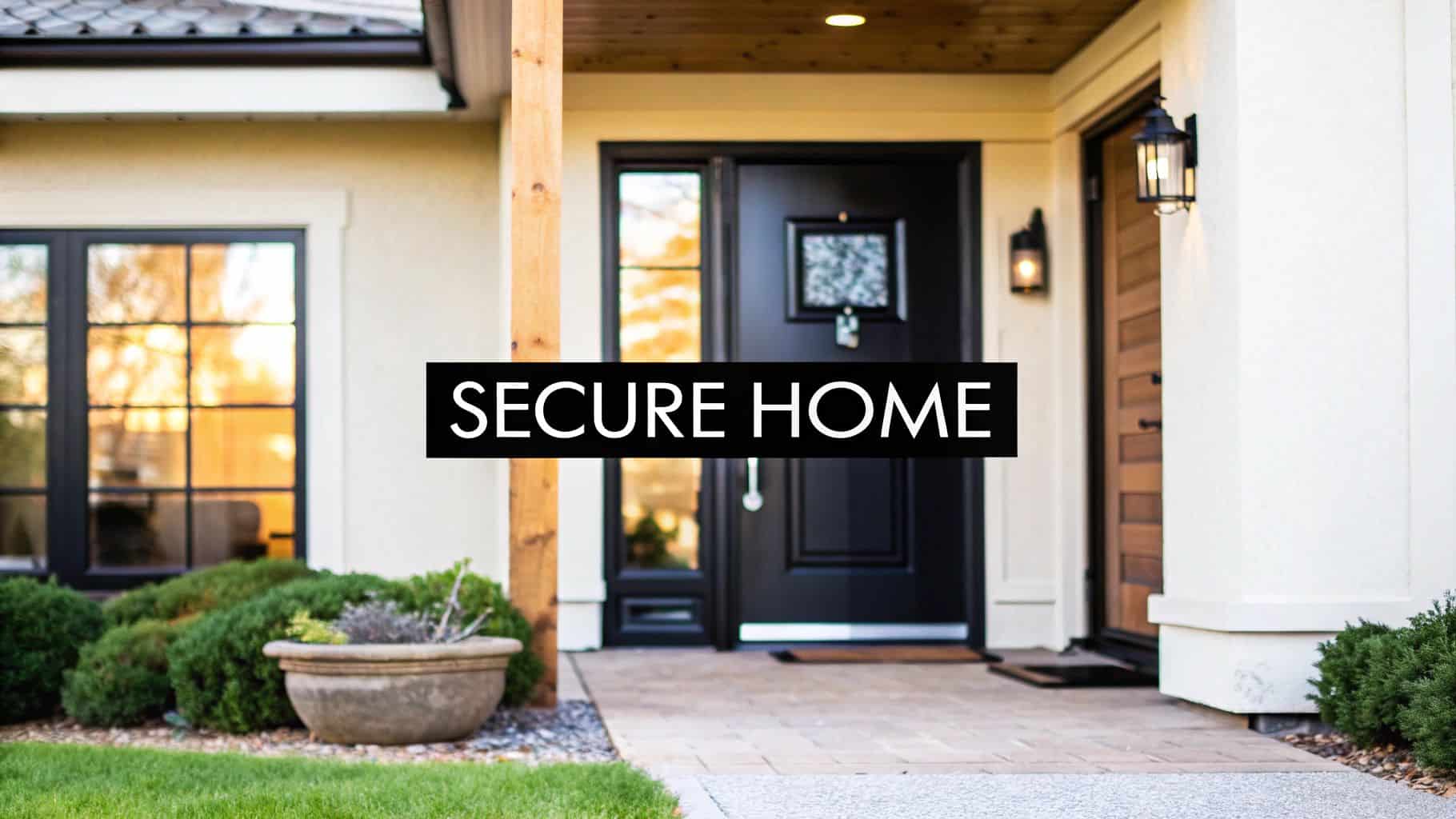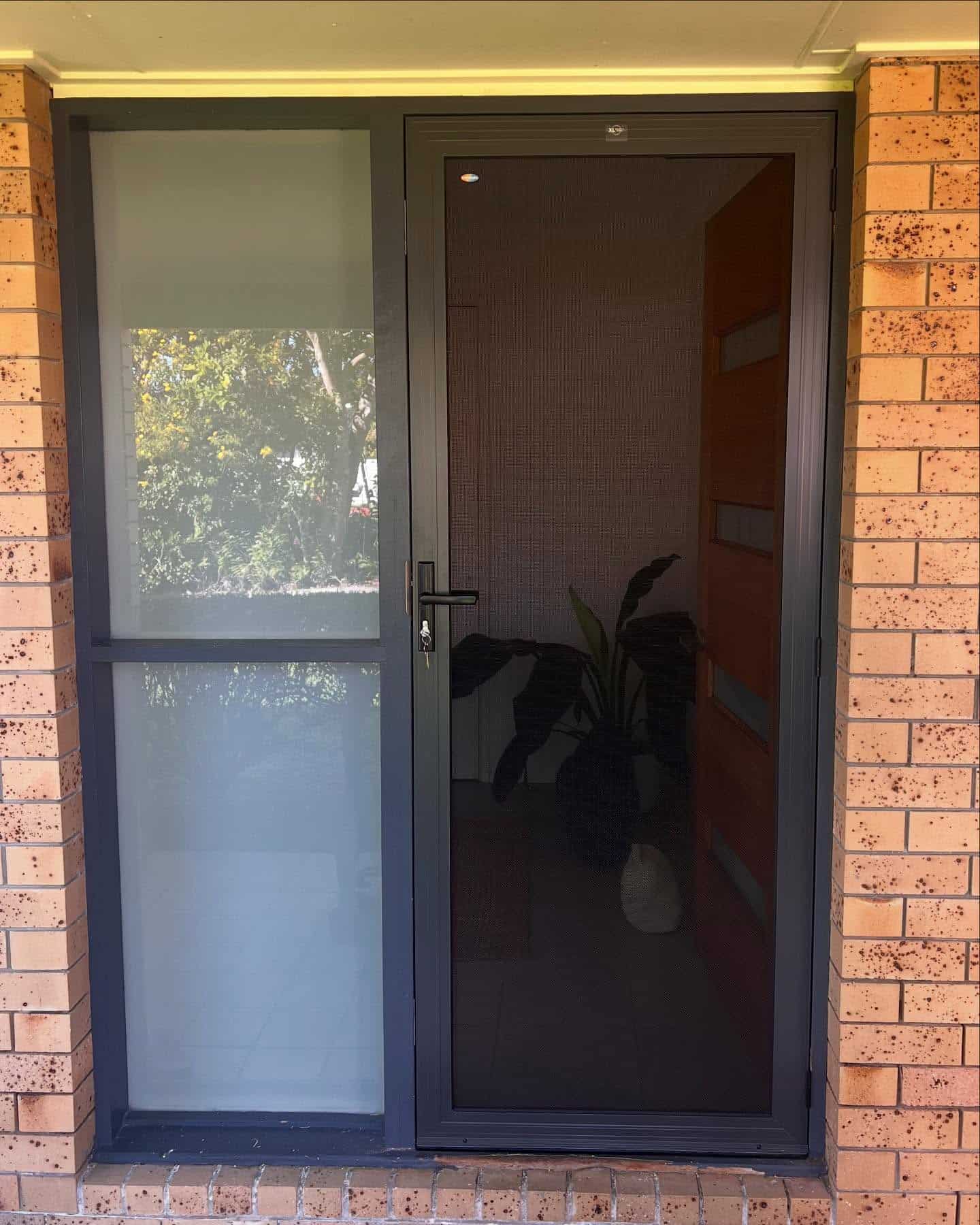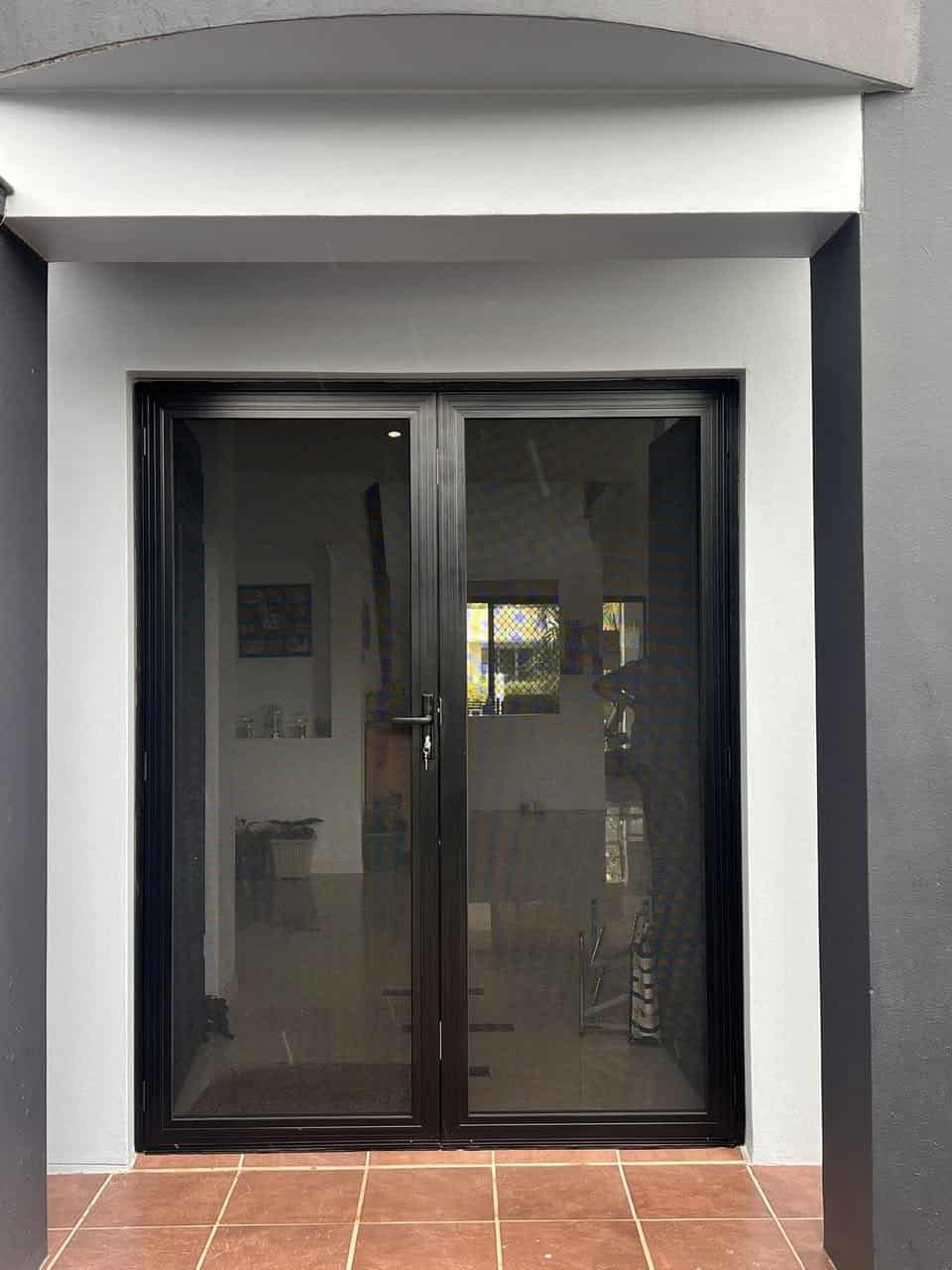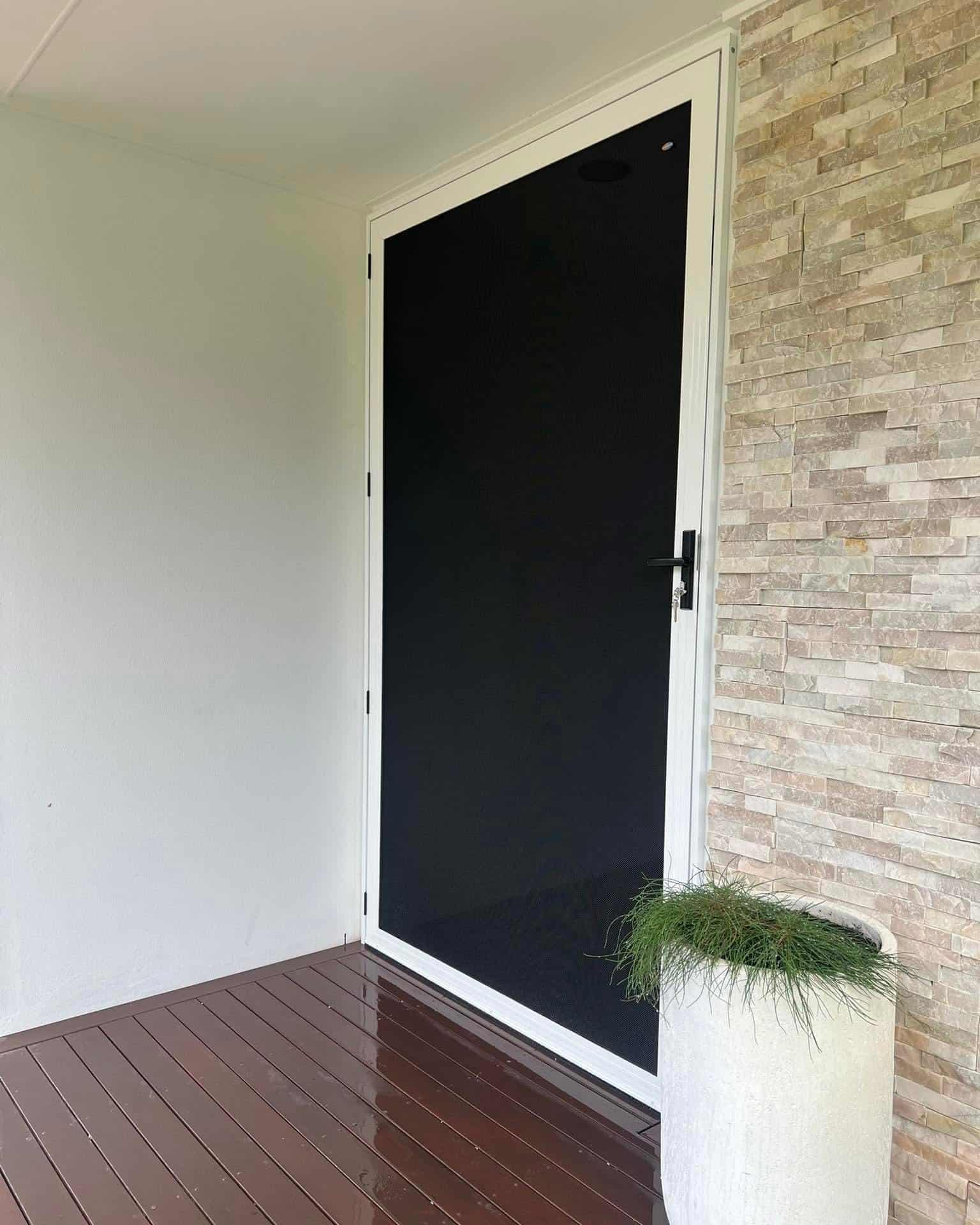Why Your Home Deserves a Security Door
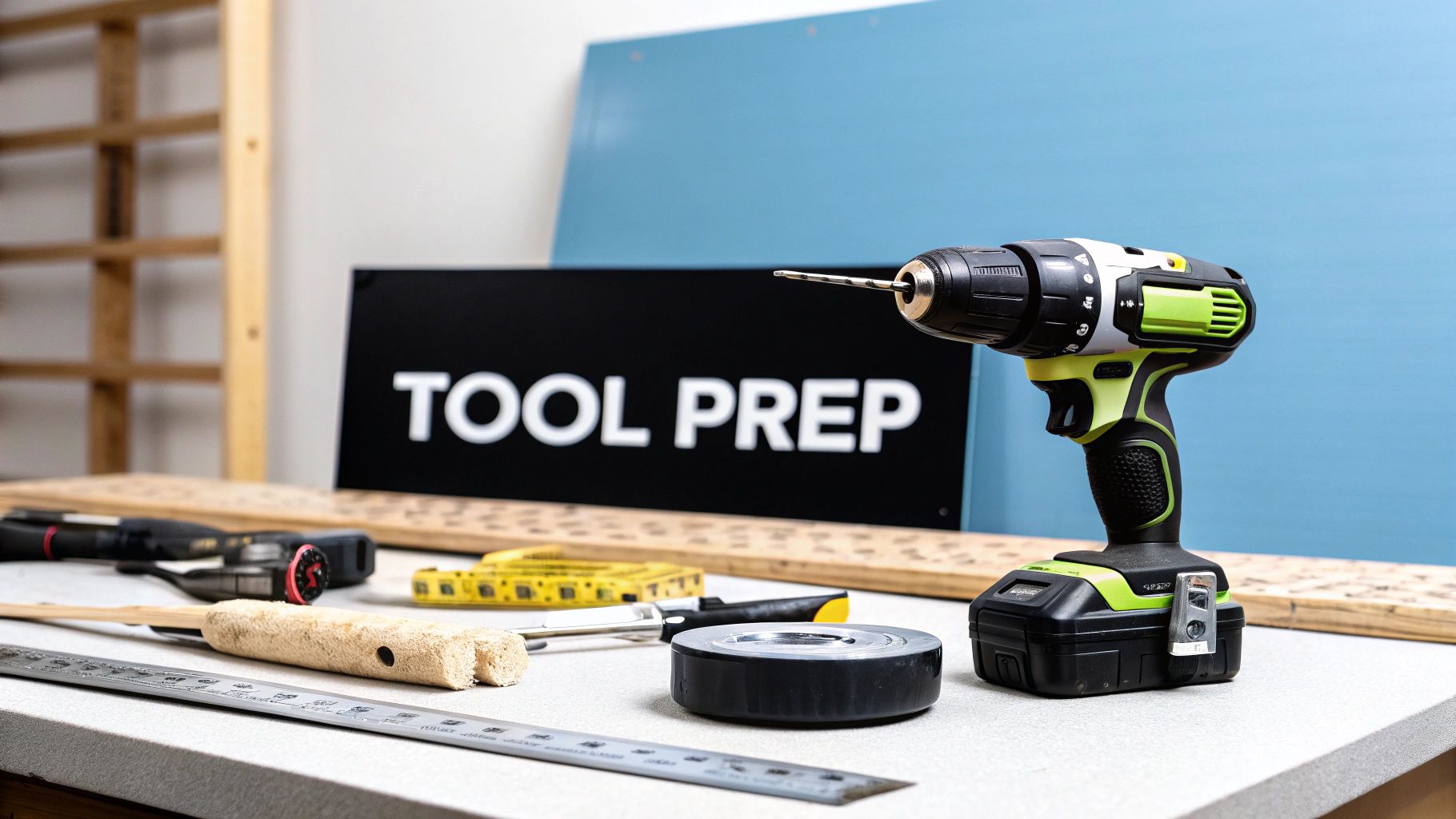
Your home is your sanctuary, and protecting it should be a top priority. Traditional locks and alarms offer a base level of security, but often prove insufficient against determined intruders. This is where security doors excel, transforming your home’s entryway into a robust barrier. Their presence acts as a visible deterrent, significantly lowering the risk of attempted break-ins.
This enhanced protection provides more than just peace of mind. It offers tangible benefits that impact your daily life.
Enhanced Security and Peace of Mind
The core advantage of a security door is the increased security it offers. These doors are designed to resist substantial force, making unauthorized entry extremely difficult. Reinforced frames and multi-point locking systems create a strong shield against common intrusion methods like kicking or prying.
Compared to standard doors, this physical barrier provides a much greater level of protection. This gives you the comfort and peace of mind that comes with knowing your home is truly secure.
Increased Property Value and Insurance Savings
Installing a security door can also increase your property’s value. Potential buyers value added security and are often willing to pay a premium for homes with these features. Furthermore, some insurance companies offer reduced premiums for homes equipped with security doors, acknowledging their effectiveness in preventing burglaries.
Over time, the investment in a security door can pay for itself through lower insurance costs and increased property value.
Energy Efficiency and Climate Control
The right security door can also improve energy efficiency. This is particularly important in climates like Australia, where maintaining a comfortable indoor temperature can be challenging and expensive. The Australian doors and windows market is expected to represent over 40% of the Asia Pacific region’s revenue by 2027, fueled by the increasing demand for energy-efficient and secure homes.
This growing trend underscores the importance of choosing security doors that offer both protection and insulation, resulting in energy savings and a more comfortable living environment.
Aesthetics and Customization
Modern security doors don’t require compromising your home’s aesthetics. They are available in a wide variety of designs and finishes to suit any architectural style. You can select from different materials, colors, and even decorative features to seamlessly blend the security door with your home’s exterior.
This means you can prioritize safety without sacrificing your home’s curb appeal. With so many advantages, investing in a security door is a wise choice for any homeowner seeking to enhance their home’s safety, value, and peace of mind.
Tools That Make Security Door Installation Seamless
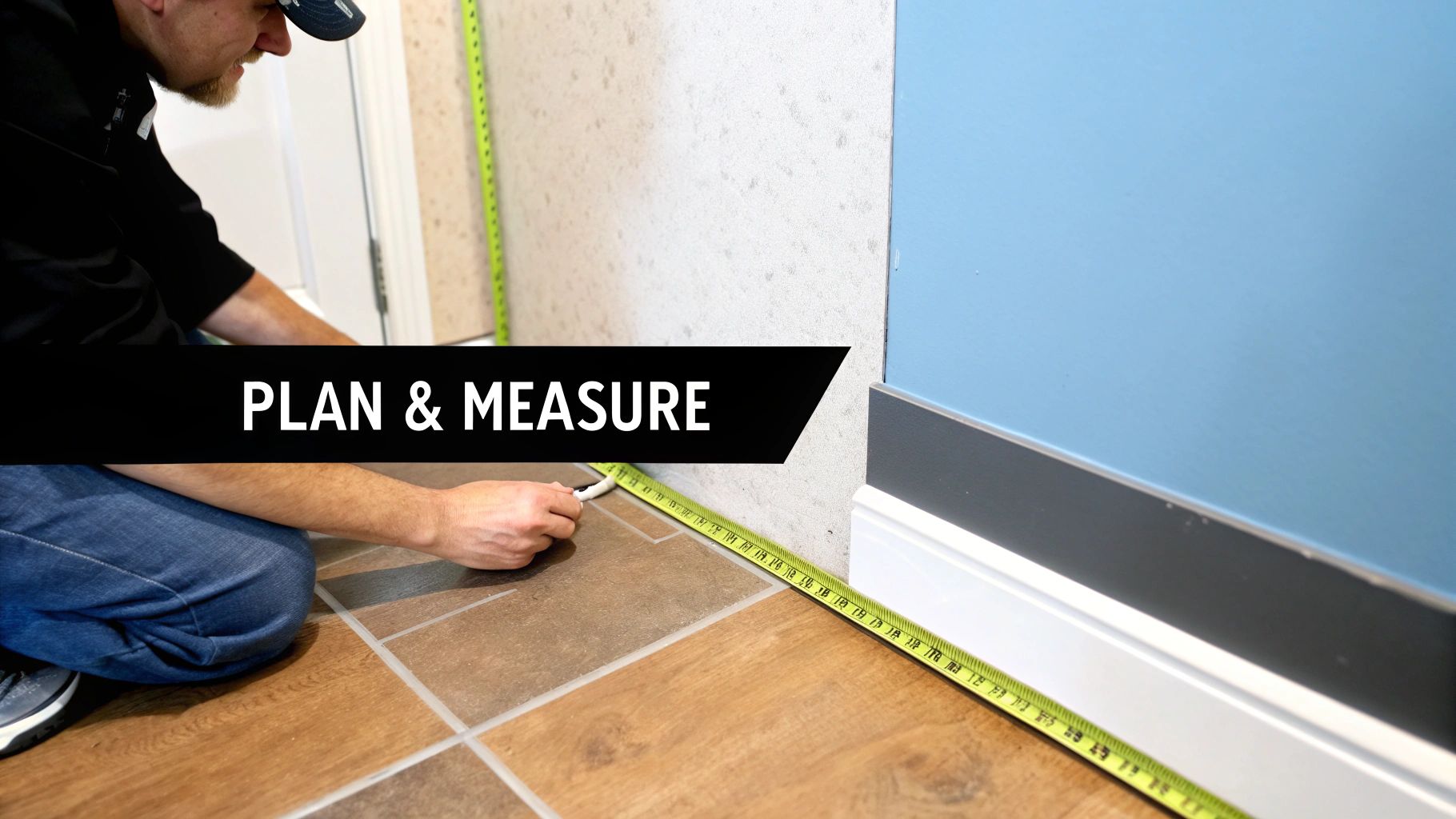
A successful security door installation relies heavily on having the right tools. It’s not simply a matter of strength; precision and the correct equipment are essential. This section outlines the essential tools you will need, from the basics to more specialized equipment that can elevate a DIY project to a professional standard. Understanding each tool’s purpose will empower you to install your security door effectively and safely.
Must-Have Tools For Every Installation
Some tools are absolutely fundamental for any security door installation. These include a few key items you’ll want to have on hand before starting.
- Drill with various drill bits: A drill is essential for creating pilot holes and securing the door frame. Invest in high-quality drill bits designed for metal and masonry, depending on your wall type.
- Screwdriver Set: You’ll need a variety of sizes and head types (Phillips, flathead) for different screws and fasteners. A powered screwdriver can save significant time and effort.
- Measuring Tape: Accurate measurements are vital for a proper fit. A high-quality tape measure ensures this precision.
- Level: Making sure the door frame is perfectly plumb and level is essential for smooth operation. A spirit level or a digital level will work.
- Safety Glasses and Gloves: Protecting your eyes and hands is paramount. Security door installations involve drilling and working with sharp metal edges. Appropriate safety glasses and work gloves are non-negotiable.
Specialized Tools For A Professional Finish
While the basic tools will get the job done, specific specialized tools can significantly improve the installation process and the final result. These additions can make a noticeable difference in the quality and efficiency of the installation.
- Reciprocating Saw: For trimming the door frame or making adjustments to the existing doorway, a reciprocating saw offers the power and control you need.
- Hammer Drill: If you’re installing the door into concrete or brick, a hammer drill is indispensable. Its percussive action makes drilling into these tough materials much more efficient.
- Shim Kit: Shims are thin wedges used to fill gaps and ensure a snug fit for the door frame. They are crucial for achieving proper alignment and smooth operation.
Investing in specialized tools is often justified by the improved efficiency and precision they bring to the installation. However, if purchasing isn’t an option, many of these tools can be rented. Knowing how to use these tools effectively can turn a potentially challenging installation into a smooth process. For example, choosing the right drill bit for your wall type helps prevent damage and ensures a secure fit. Properly using shims guarantees that the door operates flawlessly.
Before getting started, review the following table to ensure you have everything you need.
To help you gather the right tools and materials, we’ve compiled the following table:
Essential Tools for Security Door Installation
A comprehensive list of required tools, their purposes, and recommended specifications for installing a security door properly
| Tool/Material | Purpose | Specifications | Alternative Options |
|---|---|---|---|
| Drill with various drill bits | Creating pilot holes and securing the door frame | High-quality bits for metal or masonry | |
| Screwdriver Set | Driving screws and fasteners | Variety of sizes and head types (Phillips, flathead) | Powered screwdriver |
| Measuring Tape | Accurate measurements for proper fit | High-quality tape measure | Laser measure |
| Level | Ensuring plumb and level door frame | Spirit level or digital level | |
| Safety Glasses and Gloves | Protecting eyes and hands | ANSI-approved safety glasses, durable work gloves | |
| Reciprocating Saw | Trimming door frame or making adjustments | Variable speed control | |
| Hammer Drill | Drilling into concrete or brick | SDS-plus or SDS-max chuck | |
| Shim Kit | Filling gaps and ensuring snug fit | Plastic or wood shims |
This table provides a handy overview of the tools and materials necessary for a successful security door installation. Remember to select the right specifications for your particular project.
Preparing Your Doorway Like a Professional
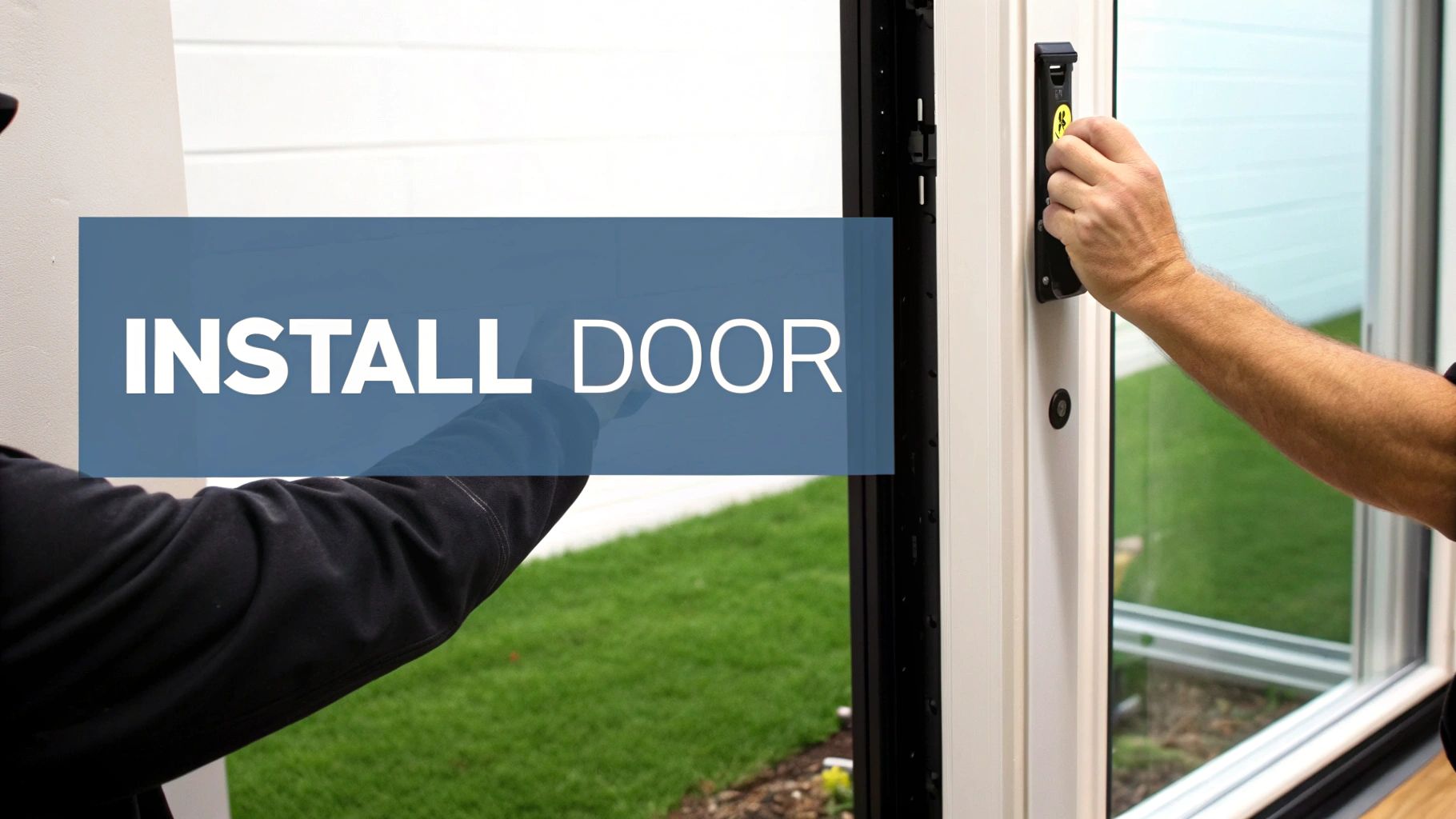
The success of your security door installation relies heavily on the preparation you do before the door arrives. Think of it as laying the foundation for a house: a solid base is crucial. This guide will walk you through preparing your doorway like a seasoned professional, ensuring a seamless and secure installation. This preparation is what elevates a DIY project to a professional-looking result.
Assessing Your Existing Door Frame
The first step is a thorough inspection of your current door frame. Look for any signs of damage, rot, or instability. These structural problems can compromise the security of even the strongest door. A rotting frame, for example, can be easily breached regardless of the door’s robustness. Addressing these issues before installation is paramount.
Also, check for obstructions around the door frame, such as overgrown plants or uneven surfaces. These can hinder the installation and impact the door’s performance. A clear, level workspace is key.
Precise Measurement Techniques
Accurate measurements are essential for a perfect fit. Measure the width and height of the door opening at multiple points. This accounts for any variations in the frame, ensuring the most accurate dimensions, even if the frame isn’t perfectly square.
Consider seasonal changes, too. Wood frames expand and contract with temperature fluctuations. Measuring during different seasons can help identify potential fit problems later on, especially in areas with significant temperature variations.
Addressing Common Doorway Challenges
Different homes present unique doorway challenges. Older homes might have uneven frames or settled foundations, requiring specialized solutions. Modern constructions might have specific framing materials needing different installation techniques. Installing a security door involves several key steps to meet Australian Standards, including material selection for the infill. The cost of installing a security door in Australia varies based on the material. A standard-sized SecureView security door in 316 stainless steel, for instance, can cost between $1400 and $1500. Compliance with AS 5039 standards is vital, and professional installation ensures proper compliance and optimal security. For more information, visit the National Security Screen Association. Thorough preparation addresses these challenges and ensures a smooth installation.
Final Preparations Before Installation
After addressing structural issues and taking precise measurements, a few final steps remain. Clear the area around the doorway of any furniture or obstructions. This provides a safe and efficient workspace.
Having your tools organized and readily available will further streamline the installation process. This includes your drill, screws, level, and any other specialized tools needed. Proper preparation will significantly reduce installation time and ensure a professional finish. A clear plan and a prepared work area make the installation much smoother. Now you’re ready to begin installing your security door.
Installing Your Security Door: The Step-by-Step Process
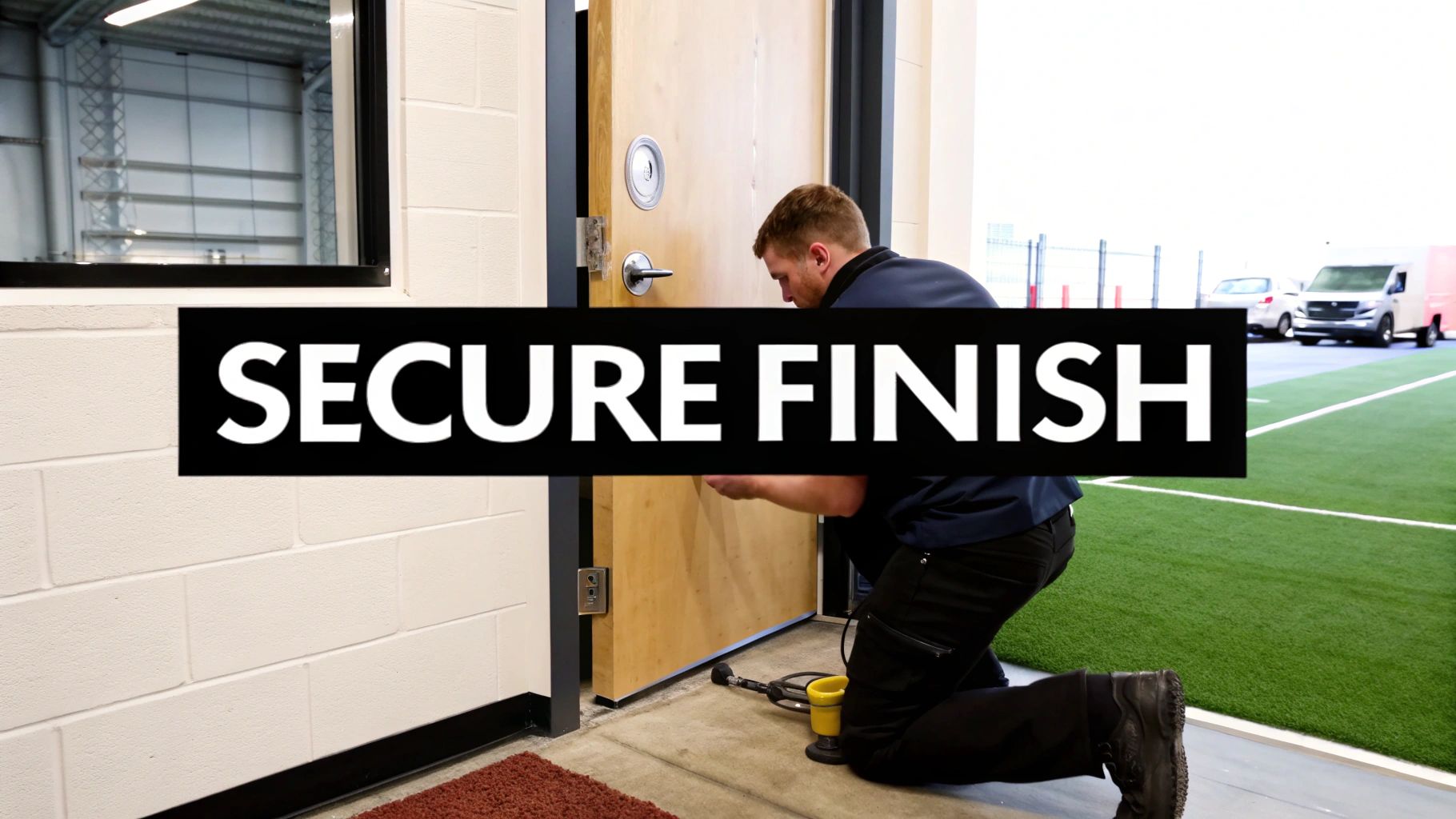
With your doorway prepped and tools ready, let’s enhance your home’s security. This guide provides a detailed, step-by-step process for installing your security door, simplifying the process and eliminating any guesswork. We’ll cover the essential techniques used by security professionals for a precise and secure installation.
Positioning and Initial Alignment
Accurate positioning is paramount. Carefully lift the security door into the opening, ensuring it’s centered and flush with the outer frame. Use shims to achieve perfect alignment. This initial step ensures the door hangs correctly and operates smoothly, much like a solid foundation is essential for a stable house.
Securing the Frame: Fasteners and Techniques
Begin by securing the hinge side of the frame with appropriate fasteners for your wall type. Pre-drilling pilot holes prevents cracking and provides a firm hold. Next, secure the latch side, again using appropriate fasteners, ensuring consistent frame alignment. This specific fastening order distributes weight evenly, preventing warping or stress on the door, similar to the importance of tightening car wheel bolts in sequence.
Fine-Tuning and Adjustments
After securing the frame, check the door’s operation. It should swing freely and latch smoothly. Adjust the shims as needed to achieve a perfect fit and eliminate any sticking. These minor adjustments significantly impact long-term door performance, ensuring smooth and consistent operation.
Locking Mechanism Installation and Testing
Install the locking mechanism according to the manufacturer’s instructions. This usually involves attaching the strike plate to the door jamb, ensuring correct alignment with the latch bolt. Test the lock thoroughly to ensure it engages smoothly and securely. This is a vital step, as a secure lock is the core of your security door’s effectiveness.
Finishing Touches and Quality Control
Apply necessary sealant around the frame to prevent drafts and enhance weather resistance. This final touch adds a professional look. For added assurance, it’s wise to verify your installer’s credentials. In Australia, licensing requirements for security door installers differ by state. In NSW, installers often require a security license, like a Class 2B or 2C license. This ensures qualified professionals handle the installation and minimizes potential risks. Learn more about licensing requirements in NSW. After installation, conduct a final quality check. Open and close the door several times, checking for smooth operation, secure locking, and a tight seal. This final step confirms your security door is correctly installed and ready to provide optimal protection and peace of mind for years to come.
Troubleshooting Common Installation Issues
Even with careful planning, challenges can occur during installation. Here’s how to tackle some typical issues:
- Door Sticks or Binds: Check for misalignment or excessive pressure from the frame. Adjust shims or loosen fasteners as needed.
- Lock Doesn’t Engage Properly: Verify the strike plate is correctly aligned and the latch bolt extends fully.
- Gaps Around the Frame: Apply additional sealant or weather stripping to seal gaps and enhance weather resistance.
Addressing these potential issues proactively ensures a smooth and successful installation.
Choosing the Perfect Security Door for Your Home
A crucial step in installing a security door is selecting the right one. Not all security doors offer the same level of protection. The ideal door for one home might be unsuitable for another. This guide walks you through the selection process, matching your security needs with the right features. We’ll cover materials, climate considerations, and security features—helping you make an informed decision.
Decoding Security Door Materials
The material of your security door impacts its strength, durability, and maintenance. Steel offers exceptional strength and forced-entry resistance, but can rust in harsh climates. Aluminum is lightweight and rust-resistant, a good choice for coastal areas, but may not be as strong as steel. Stainless steel combines strength and corrosion resistance, but costs more.
To help you compare, we’ve compiled the following table:
Security Door Materials Comparison: This table compares different security door materials, their features, benefits, and typical price ranges to help readers make informed decisions.
| Material Type | Security Level | Durability | Maintenance | Typical Price Range |
|---|---|---|---|---|
| Steel | High | High (except in humid climates) | Moderate (requires painting or other rust prevention) | Moderate |
| Aluminum | Moderate | High (rust-resistant) | Low | Moderate to High |
| Stainless Steel | High | Very High | Low | High |
As you can see, each material offers a unique set of advantages and disadvantages. Choosing the right one depends on your specific needs and budget.
Climate Considerations: A Key Factor
Your local climate significantly impacts your security door’s lifespan. Extreme temperatures can cause materials to expand and contract, affecting the door’s fit. Coastal environments with salty air demand corrosion-resistant materials. For humid coastal areas, aluminum or stainless steel is better than steel to prevent rust. This proactive approach saves you money in the long run.
Essential Security Features: Beyond the Basics
Beyond the material, several features enhance a door’s effectiveness. A multi-point locking system secures the door at multiple points, increasing resistance to forced entry. Reinforced frames improve structural integrity. Consider features like security mesh or perforated metal screens to add protection without compromising visibility or ventilation. In regions like Melbourne, security doors are increasingly important due to rising urban crime.
Balancing Aesthetics and Security
Security is paramount, but your door shouldn’t detract from your home’s appearance. Modern security doors come in various styles and finishes. You can choose from various colors, decorative elements, and glass inserts. This allows for a beautiful entryway and a secure barrier. The material also affects appearance, so consider how it complements your home’s exterior. The perfect security door balances form and function.
Maintaining Your Security Door for Lifetime Protection
After the rewarding experience of installing a new security door, it’s essential to focus on maintaining it. This goes beyond simply keeping the door looking its best; it’s about ensuring its longevity and effectiveness in protecting your home. Just like regular car maintenance keeps it running smoothly for years, consistent care for your security door ensures lasting security and peace of mind.
Regular Maintenance: Small Habits, Big Impact
Think of your security door like a well-oiled machine. Small, regular maintenance habits can significantly extend its lifespan and keep it functioning optimally.
- Weekly Cleaning: A simple wipe-down with a damp cloth removes dust, dirt, and grime, preventing build-up that can interfere with smooth operation.
- Monthly Lubrication: Applying a lubricant designed for locks and hinges keeps them moving freely, much like lubricating a bicycle chain. This prevents stiffness and ensures a smooth, quiet operation.
- Quarterly Inspection: A quick check for loose screws, worn weather stripping, or any signs of damage can prevent small issues from becoming major, costly repairs down the line. Addressing these minor problems early is key to preserving the door’s integrity.
These consistent, easy actions play a crucial role in maximizing your security door’s protective qualities and extending its useful life.
Seasonal Care: Protecting Against the Elements
Just as you adjust your wardrobe for the changing seasons, your security door needs specific care throughout the year. Adapting your maintenance routine helps protect it from the elements and prevents common problems.
- Spring Cleaning: After winter’s harsh conditions, a thorough cleaning is recommended, focusing on areas where debris may have accumulated. Inspect the weather stripping for any signs of wear and tear, replacing it if necessary.
- Summer Protection: The heat of summer can cause sticking, so lubricate moving parts more frequently. Ensure proper ventilation around the door to minimize heat build-up and prevent warping.
- Autumn Preparation: Clear any leaves and debris from around the door to prevent blockage and ensure smooth operation. Inspect the frame for any gaps that could lead to drafts and heat loss.
- Winter Care: Lubricate locks and hinges with a cold-weather lubricant to protect them from freezing. Check weather stripping for cracks or damage that could let in cold drafts, and replace it promptly if needed.
This seasonal approach to maintenance safeguards your door from various weather conditions, prolonging its lifespan and maintaining its effectiveness.
Professional Inspections: Expert Eyes on Your Security
While regular maintenance can address many everyday issues, periodic professional inspections are essential for catching hidden problems. A trained professional can identify subtle signs of wear, misalignment, or potential security vulnerabilities that might be missed by the untrained eye.
These professional check-ups provide valuable insights, allowing for early detection of potential issues and preventing costly repairs or security breaches. Investing in professional inspections offers peace of mind, knowing your security door is performing at its peak protective capacity.
Troubleshooting Common Problems
Here are some common security door issues and how to address them:
- Alignment Drift: If the door sticks or rubs against the frame, the hinges may need adjusting, or the frame itself might have shifted.
- Weather Seal Degradation: Worn or damaged weather stripping should be replaced promptly to prevent drafts and maintain energy efficiency.
- Lock Stiffness: Regularly lubricate the lock. If stiffness persists, the internal mechanism may require professional attention.
Knowing how to identify and address these common problems can help extend your door’s lifespan. For more complex issues, contacting a qualified professional is always recommended.
For professional security door installation and maintenance on the Gold Coast, consider XL Security and Blinds (https://xlscreens.com.au). With 50 years of experience, they offer free on-site consultations to address your specific security needs.


